Reviews
9 Must-See Artists at La Biennale de Montréal
It's the second time the biennial is at the Musee’ d’art contemporain de Montreal.
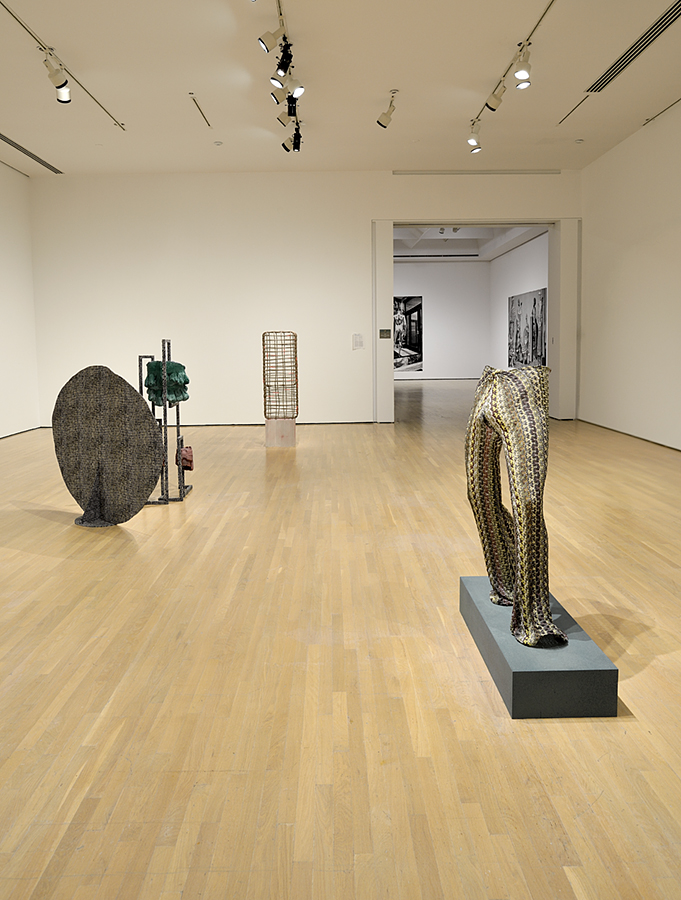
It's the second time the biennial is at the Musee’ d’art contemporain de Montreal.

Kat Herriman

Site-specificity is not the name of the game at La Biennale de Montréal. Instead, the event takes an approach more aligned with the Whitney Biennial in New York. Radiating out from the Musee’ d’art contemporain de Montreal, the biennial stays relatively contained—making it less daunting than Manifesta, but ultimately more institutional. The work must live and operate within the museum space, and all the constraints that entails.
The biennial opened the doors to international artists for the first time this year, but Canadians are still strongly represented. This mandate gives the biennial a kind of hometown pride which one rarely encounters in Venice or Berlin.
Conceived by Belgian curator Philippe Pirotte, “Le Grand Balcon” draws out similarities between Belgium and Montreal as places defined not by oneness, but by oscillation. This is the feeling one gets roaming through the halls of MAC. Here are nine artists not to miss on your journey.
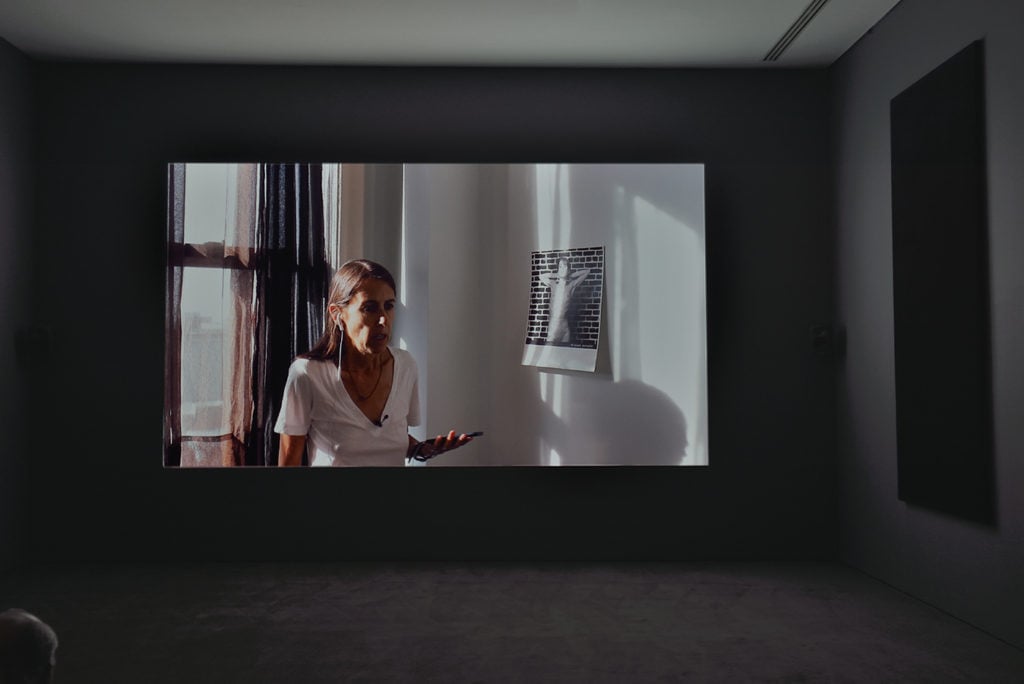
Moyra Davey, Hemlock Forest. Picture by Daniel Roussel, courtesy of La Biennale de Montréal.
1. Moyra Davey
In her new video, Hemlock Forest, Canadian artist Moyra Davey struggles to eat powdered marshmallows on her bed in almost naked repose. The image is an ode to filmmaker Chantal Akerman, who in her film, Je Tu Il Elle, eats an entire bag of powdered sugar.
For the duration of the 42-minute film, Davey meanders through her home, weaving together the lives of Akerman, Mary Wollstonecraft, and her own. The personal and the universal collapse to create a extended portrait that touches upon loss and knowledge gained. It is a coming of age story that is not about adolescence, but the continued education of a life.
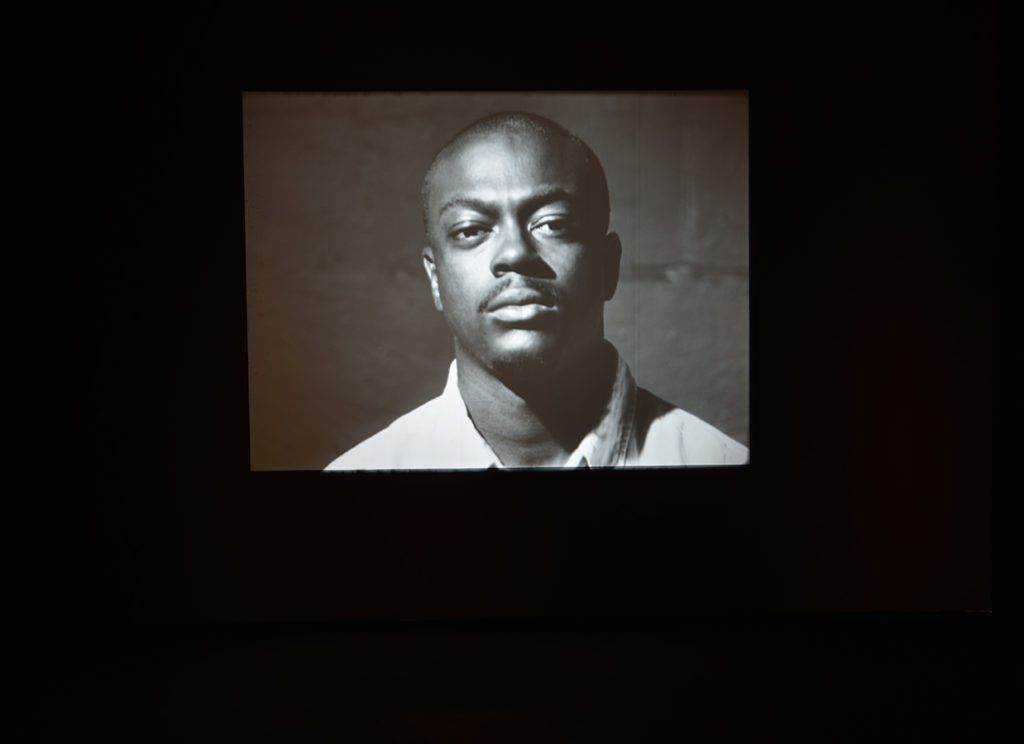
Installation view of Luke Willis Thompson, Cemetery of Uniforms and Liveries. Picture by Daniel Roussel, courtesy of La Biennale de Montréal.
2. Luke Willis Thompson
Artist Luke Willis Thompson takes on the legacy of Andy Warhol with his own interpretation of the late filmmaker’s Screen Tests. Instead of the glamorous celebrities that haunted Studio 54, however, Thompson focuses his camera on victims of police brutality, more specifically on two sons whose mothers were killed in raids.
To see Thompson’s film, viewers enter a pitch black room where they are confronted with the faces of Brandon Groce and Graeme Gardner. Their unmoving expressions seem to track the viewer, and leave one with the feeling that the state of contemporary society is defined by violence rather than artifice.
3. Shannon Bool
Shannon Bool’s two graphic tapestries dominate one’s field of vision—drowning it in a state of black and white. Created for the biennial, the two new pieces depict a mirrored mannequin inhabiting two distinctively modernist icons: Adolf Loos’s Looshaus in Vienna and the Pavilion de L’Elegance from the 1925 International Exhibition in Paris. Trapped between the digital and the historic, Bool’s static images create a vacuum for space and time. Bool provides black hole of details that one can explore.
Fetishism is a recurring theme across the biennial, and in Blass’s sculptures, a marriage of fetish and abstraction issue forth form and figure. Her sculptures, which depict bulging pants, sacks of drugs, and mesh watering cans, shift as the viewer moves around them—leaving the impression of an invisible body. Walking around Blass’s sculptures, one gets the impression they are brushing up against one another—a figure that is just as precious, precarious and paradoxically fixed as anybody.
4. Anne Imhof
Fog machines blurred the basement of the MAC for Anne Imhof’s final act of her “Angst” trilogy. After performing the first two parts at Kunsthalle Basel during Art Basel and at the Hamburger Bahnhof museum in Berlin during Berlin Art Week, Imhof arrived in Montreal with her merry band of actors in tow.
Playing out their archetypal roles, the lover, the clown, and the performers bounce off one another and the audience to create a prolonged, four-hour composition. A foot crushing a hand, a spilled Diet Coke, a stolen cigarette: these are the small cruelties that add up to create a landscape that is painfully familiar—an opera of organized chaos.

Installation view of works by Njideka Akunyili Crosby. Picture by Daniel Roussel, courtesy of La Biennale de Montréal.
5. Njideka Akunyili Crosby
At the biennial, Njideka Akunyili Crosby’s paintings occupy the same room as Elaine Cameron-Weir’s snakeskins and Luc Tuymans’s paintings, and yet they still manage to jump out. Intensely detailed but also atmospheric, her lavished surfaces invite close inspection.
Drawn from the artist’s personal life, the images illustrate her experience negotiating between post-colonial Nigeria and the US. Personal but ambiguous, her narrative images leave room for the viewer to project their own ideas of domesticity onto her canvases.
6. Kerry James Marshall
On the eve of his highly-anticipated retrospective at New York’s Met Breuer, has Kerry James Marshall unveiled a new addition to his cartoon series, “Rythm Mstr” at Musée des beaux-arts de Montréal. In comparison to his paintings, which are intensely saturated and colorful, his comic strips feel strikingly simple and direct.
Housed in an elongated light box that runs the length of a wall, the viewer walks alongside Marshall’s penned drawings. The story is broken into different narratives, and these leaps in time and place seem to point back to our incomplete understanding of one another. The gaps in the Sunday funnies become the boundaries between us.
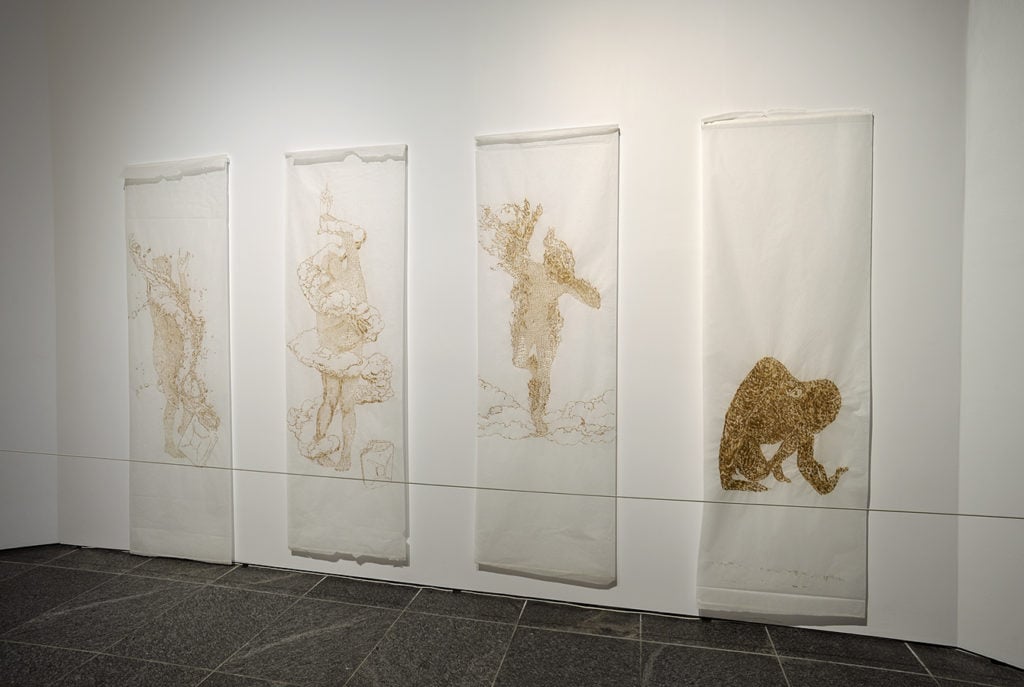
Installation view of David Gheron Tretiakoff, Immolation I, II, III, IV. Picture by Daniel Roussel, courtesy of La Biennale de Montréal.
7. David Gheron Tretiakoff
Made specifically for the biennial, David Gheron Tretiakoff’s Immolation I, II, III, IV astound with their fragility and paradoxical power. A series of four panels depicting self-immolating Arab martyrs who helped spark revolutions in their native countries during the Arab Spring, Tretiakoff’s drawings are made using the ends of burning cigarettes.
The light shines through the holes like lace, casting shadows on the wall. Shivering on the wall, the artist’s chilling images demand a moment of reflection.
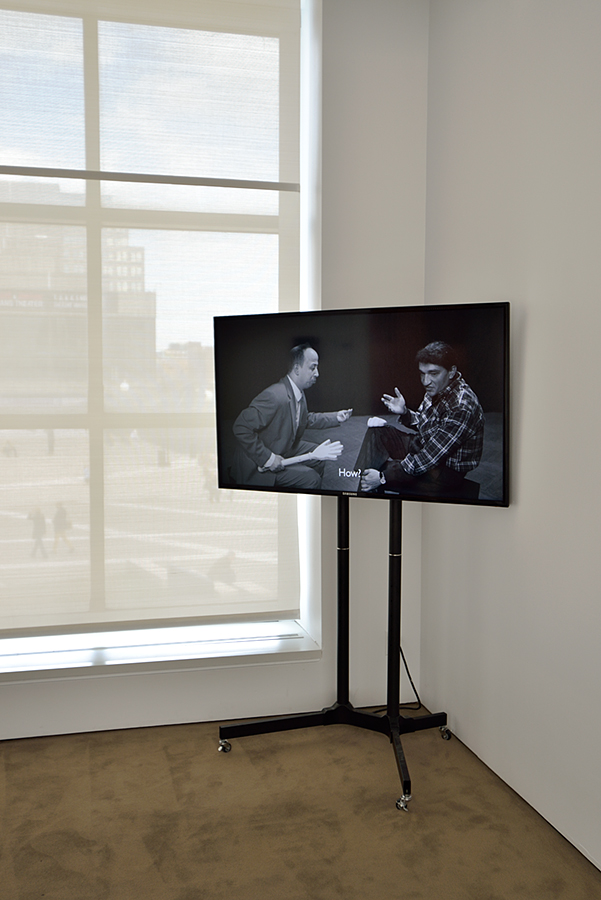
Installation view of Hassan Khan, The Slapper and the Cap of Invisibility (2015). Picture by Daniel Roussel, courtesy of La Biennale de Montréal.
8. Hassan Khan
Hassan Khan’s black and white slapstick comedy, The Slapper and the Cap of Invisibility, lands somewhere between Groucho Marx and Salvador Dalí. One of the biennial’s few laughs, the film tells the story of two men fighting over a slapper and an invisibility hat.
Based upon Egyptian comedies, the story highlights the idea of fear as a drive for humor. Bouncing around a completely bare stage, the characters suss out the boundaries of their world as well as themselves. The viewer is a spectator to this laughable interlude of self-determination.

Installation view of works by Haegue Yang. Picture by Daniel Roussel, courtesy of La Biennale de Montréal.
9. Haegue Yang
Haegue Yang’s sculptures exist in a world unto themselves at the biennial, separated from the paintings of Nicole Eisenman by a perforated wall. Populated by Yang’s straw and multimedia sculptures, Yang’s universe requires the viewer to negotiate her works like obstacles.
Every turn, every view, is slightly different—the installation requires a generous amount of both time and space to absorb. Slowing down to savor the details, one finds themselves completely wrapped up in the illusion of familiar materials repurposed as the fantastical.
La Biennale de Montréal is on view October 19, 2016–January 15, 2017.